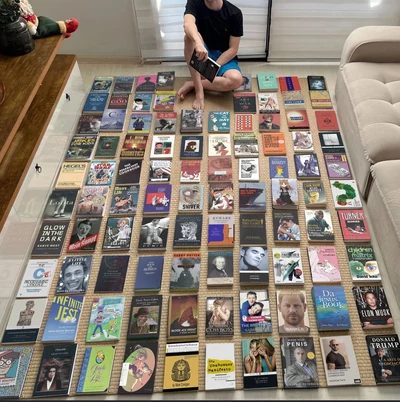When Joyce Carol Oates was thirty-four, she started a journal. “Query,” she wrote on the first page. “Does the individual exist?” She felt that she knew little about herself—for instance, whether she was honest or a hypocrite. “I don't know the answer to the simplest of questions,” she wrote. “What is my personal nature?”
The journal, which she began in 1973, eventually swelled to more than four thousand typed, single-spaced pages. Throughout, she alludes to a secret. “It's there, it's always there,” she wrote in 1978. “I wish I could give a name to it, even in code.” She thought about the secret so often, she wrote, that the journal could be named “The Person Who Has Written This Journal Lives a Secret.” She couldn't “help but wonder (and here fiction won't help me, art won't help me) whether it is a secret embedded deep within everyone's life, but particularly within the life of the creative artist.” At times the secret felt as “awkward as a hammer stuck in my pocket, getting in my way . . . at other times small and contained and indeed unobtrusive as a tiny pebble.”
Oates, who has written sixty-three novels, forty-seven collections of short stories, and numerous plays, librettos, children's novels, and books of poetry, told me that she remembered little about the journal, which is stored in nine boxes in the archives of Syracuse University. “It's sort of like words written on water,” she said. Although thinking about the “tsunami of unrevised, written-swiftly-off-the-cuff material” filled her with dread, she allowed me to read the whole thing, which covers twenty-six years. She stopped keeping the journal when she began regularly using e-mail; she expected that she would print out her e-mails and they would serve as her new diary, but she never got into the habit. She also gave me permission to read thousands of pages of her letters, stored along with the journal. “I can't bear to even think of glancing back,” she wrote me, adding that it would be like glimpsing through “the slats of a venetian blind the life or lives I was living at the time, a much happier time, irrevocably lost now.”
The first time I met Oates, at a restaurant near Princeton University, where she has taught since 1978, she had just returned from a trip to Scandinavia. She is eighty-five and very slim and agile, with perfect posture. She shows almost no signs of physical frailty. On her trip, after spending the days touring and giving interviews, she worked on her next novel in her hotel room every night, from 9 p.m. to 1 a.m. When I asked if she was jet-lagged, she said, “Oh, no—I'm totally over that.”
She seemed uniquely incurious when I read her lines from her journal. “Well, I don't know what to say about the journal because it represents work that I didn't revise,” she told me.
I had decided to write about Oates after learning that she had documented so much of her life. I thought that the journal might explain why she had never tired of her own mind. Perhaps no other writer in the past century has been so focussed on the products of her own imagination. Many authors grapple with a central preoccupation in the course of a career, until the mystery eventually loses its pull, but Oates, who has long been concerned with the question of personality and says she doubts whether she actually has one, has never exhausted her curiosity. There are only so many ways to dramatize the problem of being a self, one might think, but Oates keeps coming back to it, as if there is something she still needs to figure out.
@JoyceCarolOates you're so famous!











Jump in the discussion.
No email address required.
SO what was her conclusion?
Jump in the discussion.
No email address required.
Not here to educate you, sweaty. Try reading?
Jump in the discussion.
No email address required.
Reading is for women and children.
Jump in the discussion.
No email address required.
More options
Context
that was too many words about someone i never heard of for me to care enough to read it
Jump in the discussion.
No email address required.
More options
Context
More options
Context
More options
Context